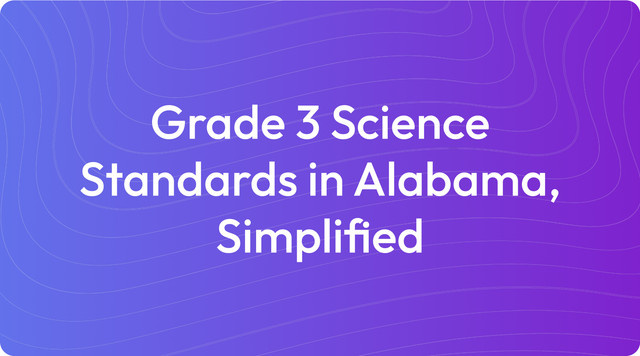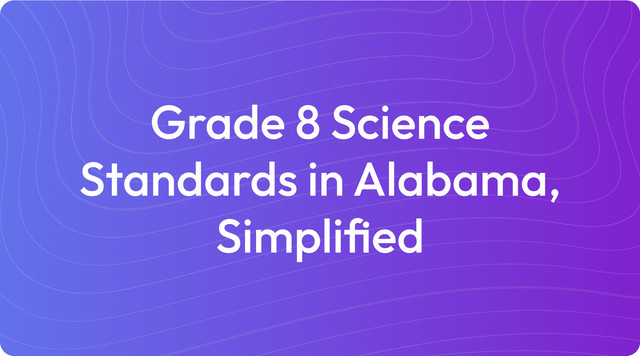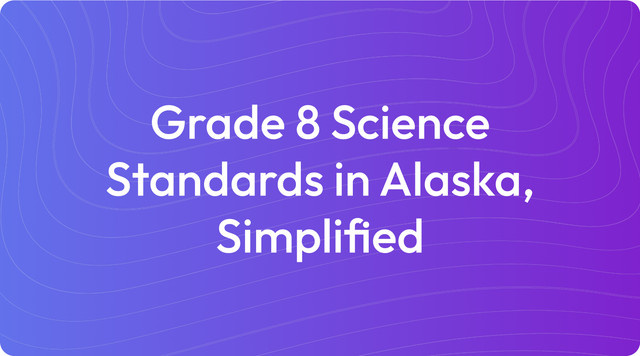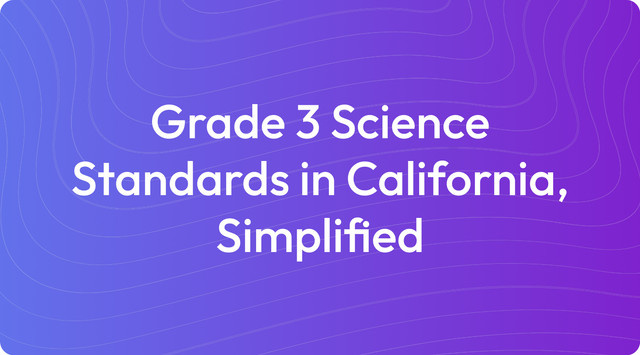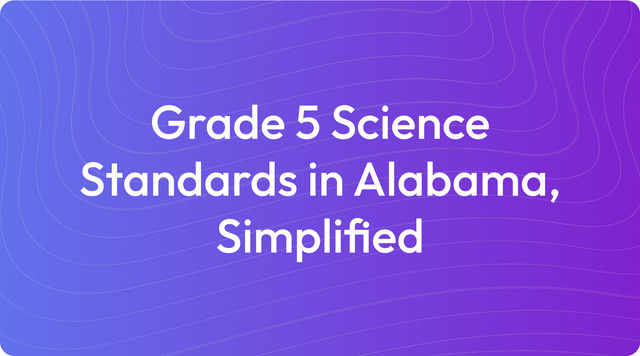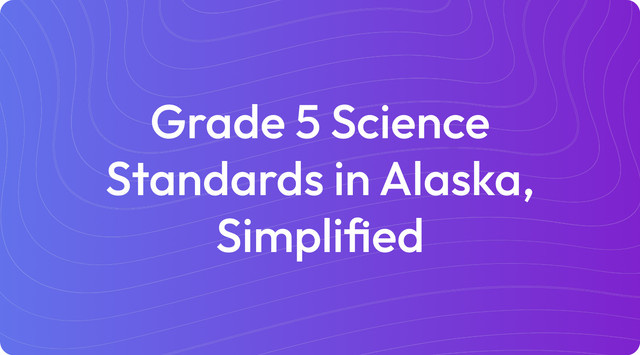Grade 1 Science Standards in Arizona, Simplified
Grade 1 science standards in Arizona introduce students to living things, senses, and weather basics. Get simple standards—read more on TeachShare!
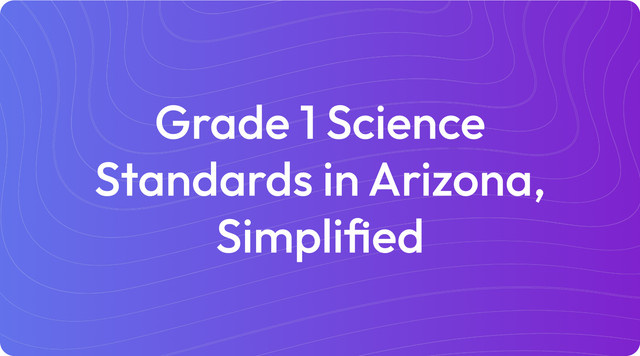
Education standards can often feel like another item on a long to-do list, creating more questions than answers. We understand the pressures you face and the need for practical tools that fit into your demanding schedule. Our goal is to provide resources that help you work with these standards effectively, without adding to your workload.
Education standards are learning goals that outline what students should know by the end of a grade level. For teachers, they provide a clear framework for instruction, but they do not dictate how you should teach. For example, first-grade science standards might set expectations for learning about forces and weather, giving you the flexibility to design hands-on activities that fit your classroom.
What Are Grade 1 Science Standards in Arizona?
The Grade 1 Science Standards in Arizona, adopted in 2018, introduce young learners to foundational science concepts through hands-on exploration. To build curiosity and a basic understanding of the world, the standards are organized into the following key domains:
Physical Science (PS): Forces and Interactions
- 1.P2U1.1: Investigate how forces (pushes and pulls) can change the motion of an object.
Life Science (LS): Needs of Living Things
- 1.L1U1.5: Develop a model to describe how organisms have traits that help them survive in their environments.
- 1.L3U1.6: Observe and describe how young plants and animals are similar to, but not exactly like, their parents.
Earth and Space Science (ESS): Weather and Earth’s Features
- 1.E1U1.4: Observe, describe, and predict weather patterns and how they affect plants and animals.
Engineering Design (ETS): Problem-Solving
- 1.P4U3.2: Ask questions, make observations, and gather information to solve a problem.
The framework for these standards is guided by resources from the Arizona Department of Education and the Next Generation Science Standards.
Key Tested Standards
While the standards provide a broad framework, assessments typically focus on core concepts that demonstrate a student's foundational understanding. To help you prepare your students, we've identified the key areas that are most likely to be assessed.
The key tested standards for first grade are organized into four main units:
- Physical Science (PS): Forces and Motion
- Life Science (LS): Needs of Living Things
- Earth and Space Science (ESS): Weather and Patterns
- Engineering Design (ETS): Problem-Solving
Example Learning Objectives for Unit Planning
Learning objectives translate broad standards into clear, measurable goals for your students. They define what learners should be able to do by the end of a lesson, helping you focus your instruction and assess understanding effectively.
To help you translate these standards into daily instruction, here are some example learning objectives for each unit:
Physical Science
- I can explore how pushes and pulls make objects start, stop, or change direction.
- I can investigate how the strength of a push or pull affects how far an object moves.
Life Science
- I can describe traits that help animals and plants survive in the environment where they live (e.g., desert or forest).
- I can observe how baby animals and plants are similar to their parents but not exactly the same.
Earth and Space Science
- I can observe and describe daily weather patterns, like sunny, rainy, or windy days.
- I can predict how weather affects plants, animals, and people in Arizona.
Engineering Design
- I can ask questions and gather information to solve a problem, like protecting an object from weather.
- I can design and test a structure, like a bridge or shelter, to solve a simple problem.
Key Changes & Updates
The latest updates to the Grade 1 Science Standards reflect a significant shift toward more active, hands-on learning. The framework encourages you to guide students through inquiry-based exploration, where they learn by asking questions, making observations, and conducting simple experiments. This approach moves away from rote memorization and toward building a genuine curiosity about the world around them.
Another key update is the integration of local context and practical skills. The standards now place a greater emphasis on Arizona-specific topics, such as desert ecosystems, making science more relatable for your students. Additionally, the inclusion of engineering design introduces foundational problem-solving skills, while connections to math and literacy help you weave science concepts across your curriculum.
Create with TeachShare
We understand that turning standards into engaging, hands-on lessons requires significant time and effort. Our platform is built to support you by making it simple to develop high-quality, inquiry-based activities that align perfectly with Arizona's framework. This gives you more time to focus on your students. Start creating standards-aligned instructional resources with TeachShare now.
Frequently Asked Questions
What are the main science topics covered in Grade 1 in Arizona?
First-grade science focuses on four key areas. Students explore physical science through the study of forces like pushes and pulls, and life science by learning how traits help plants and animals survive. They also cover earth science by observing weather patterns and their effects. Finally, engineering design is woven in to help students learn how to solve simple problems.
How do these standards connect to the local Arizona environment?
The standards are designed with local relevance in mind. Teachers are encouraged to use Arizona-specific examples, such as studying how desert animals like lizards survive in dry weather or how cacti store water. This approach helps students connect science concepts directly to their own environment.
How is engineering integrated into the first-grade curriculum?
Engineering is introduced through practical, problem-solving activities. For instance, students might be asked to design and test a solution, like building a bridge for toy cars or creating a shelter to protect a toy animal from the sun. These projects help develop critical thinking and introduce students to the engineering design process.
What are some examples of hands-on activities for first graders?
Hands-on exploration is central to the standards. Example activities include using toy cars on ramps to investigate motion, comparing pictures of baby animals to their parents to see similarities and differences, keeping a weather journal to track daily changes, and building a simple model shelter to protect an object from the elements.
How do these standards prepare students for future science classes?
These foundational standards equip students with essential skills for their entire academic journey. They learn how to make observations, collect information, and ask thoughtful questions. By identifying patterns and exploring cause-and-effect relationships, students build the critical thinking abilities necessary for more complex scientific topics in higher grades.
Answer


